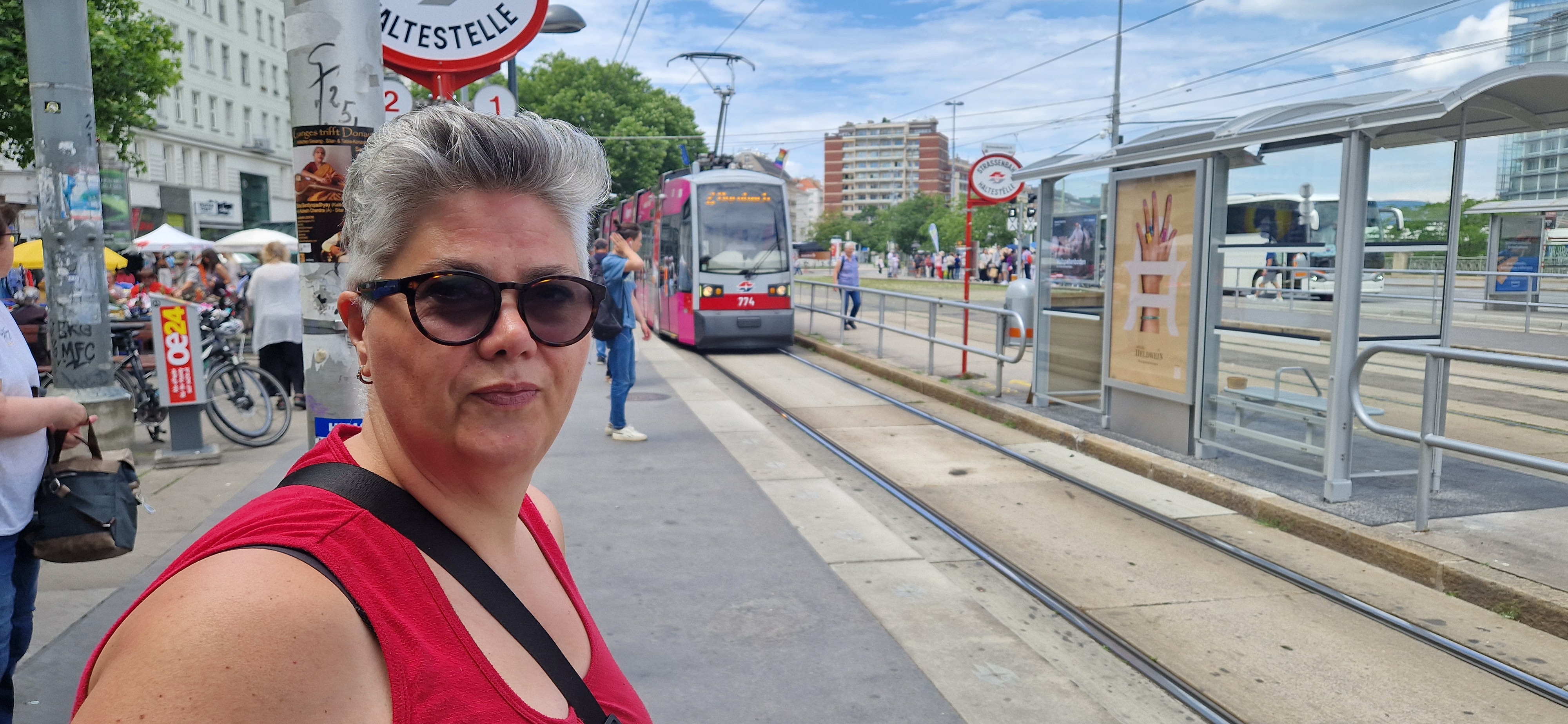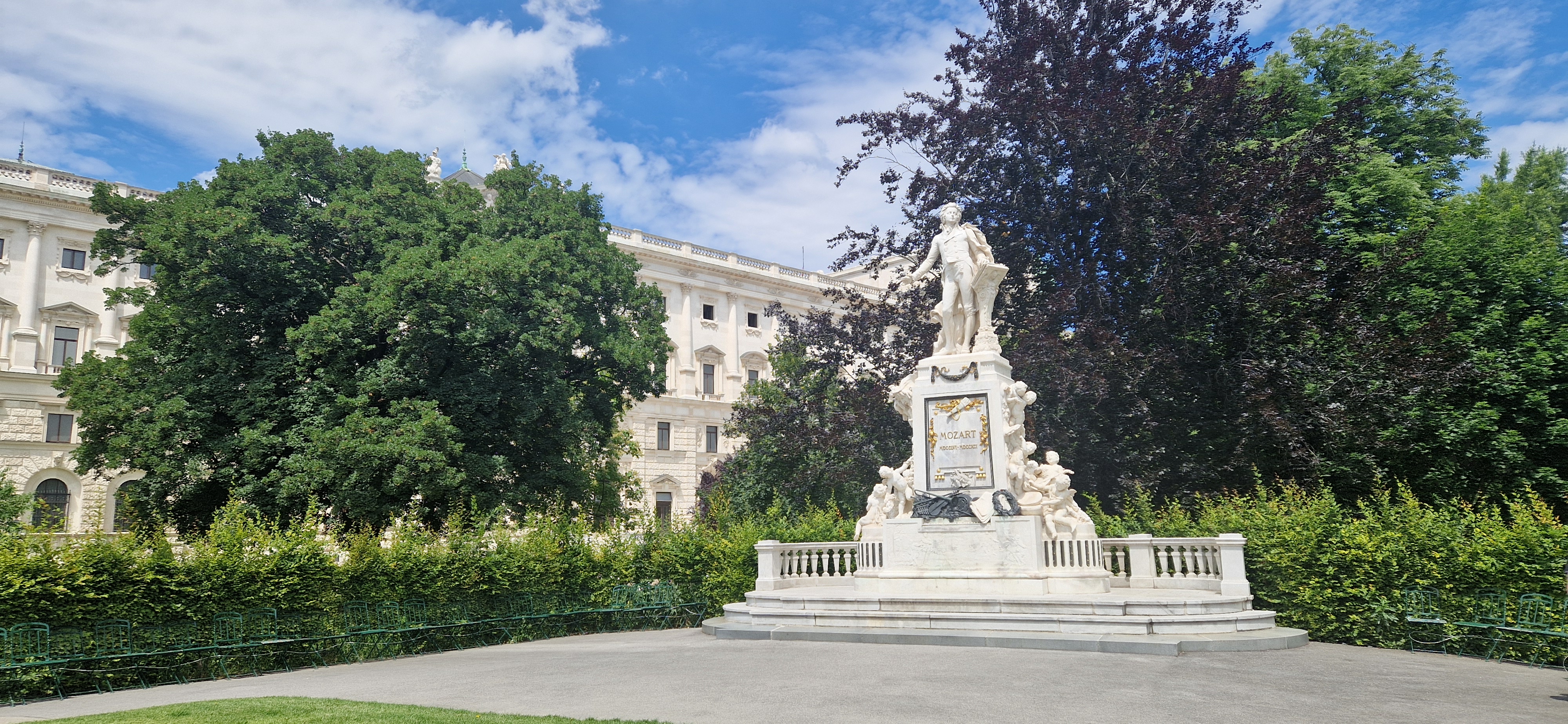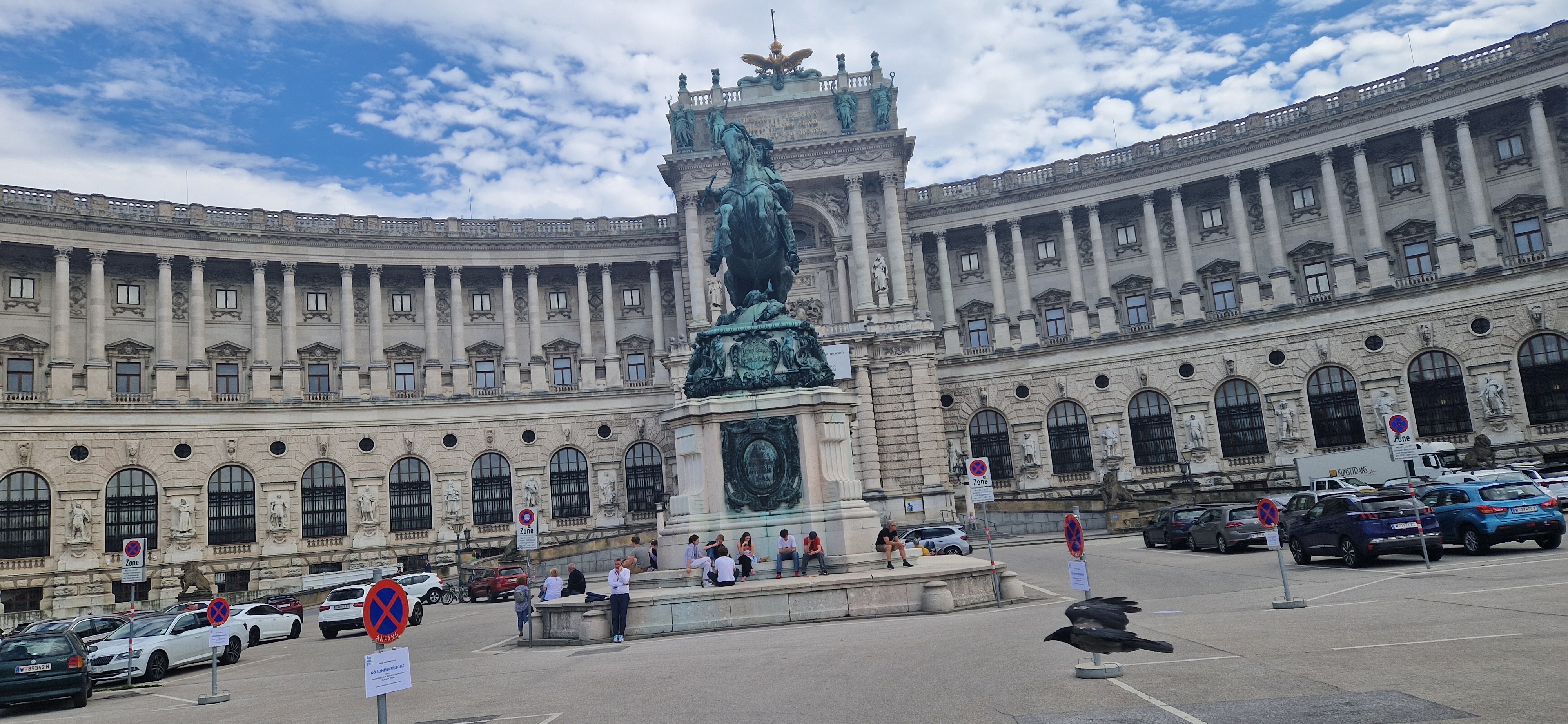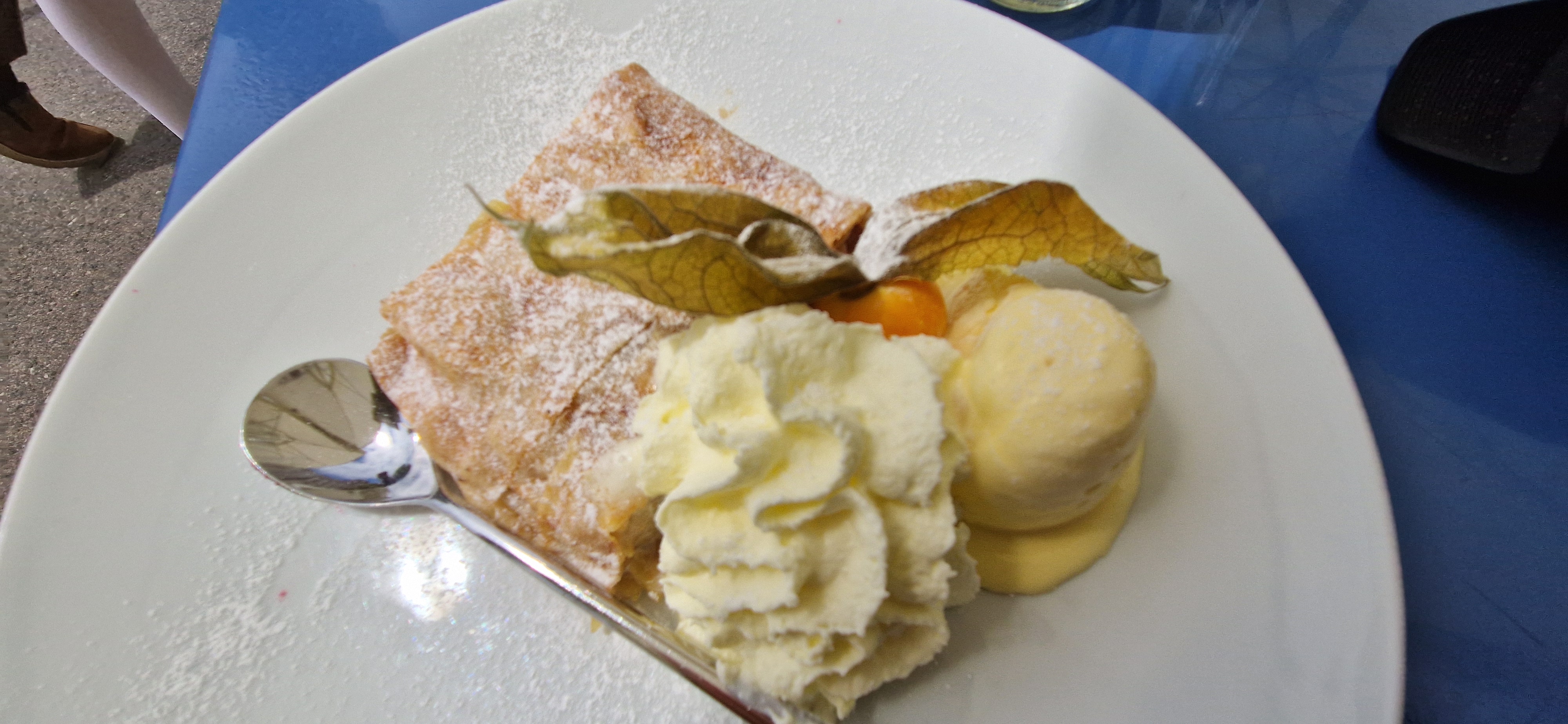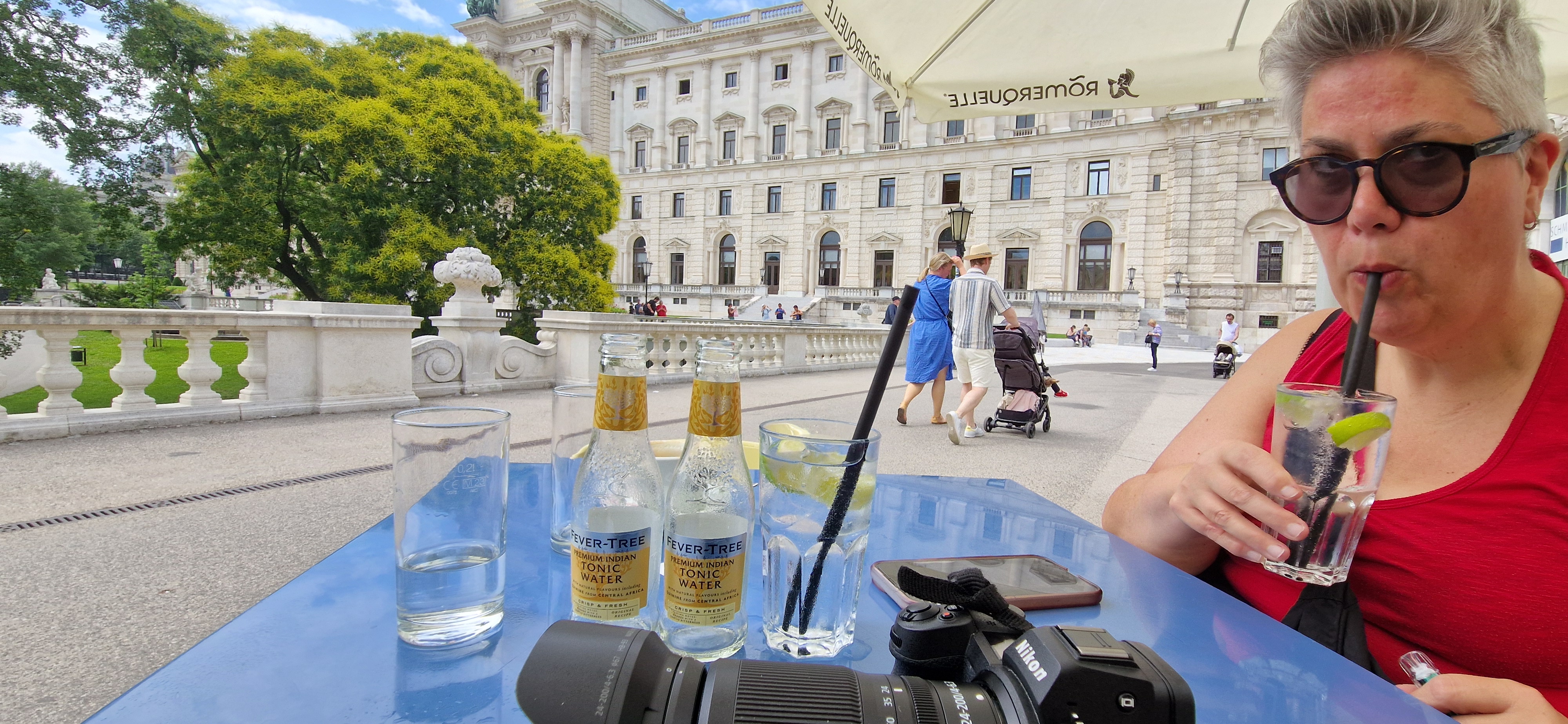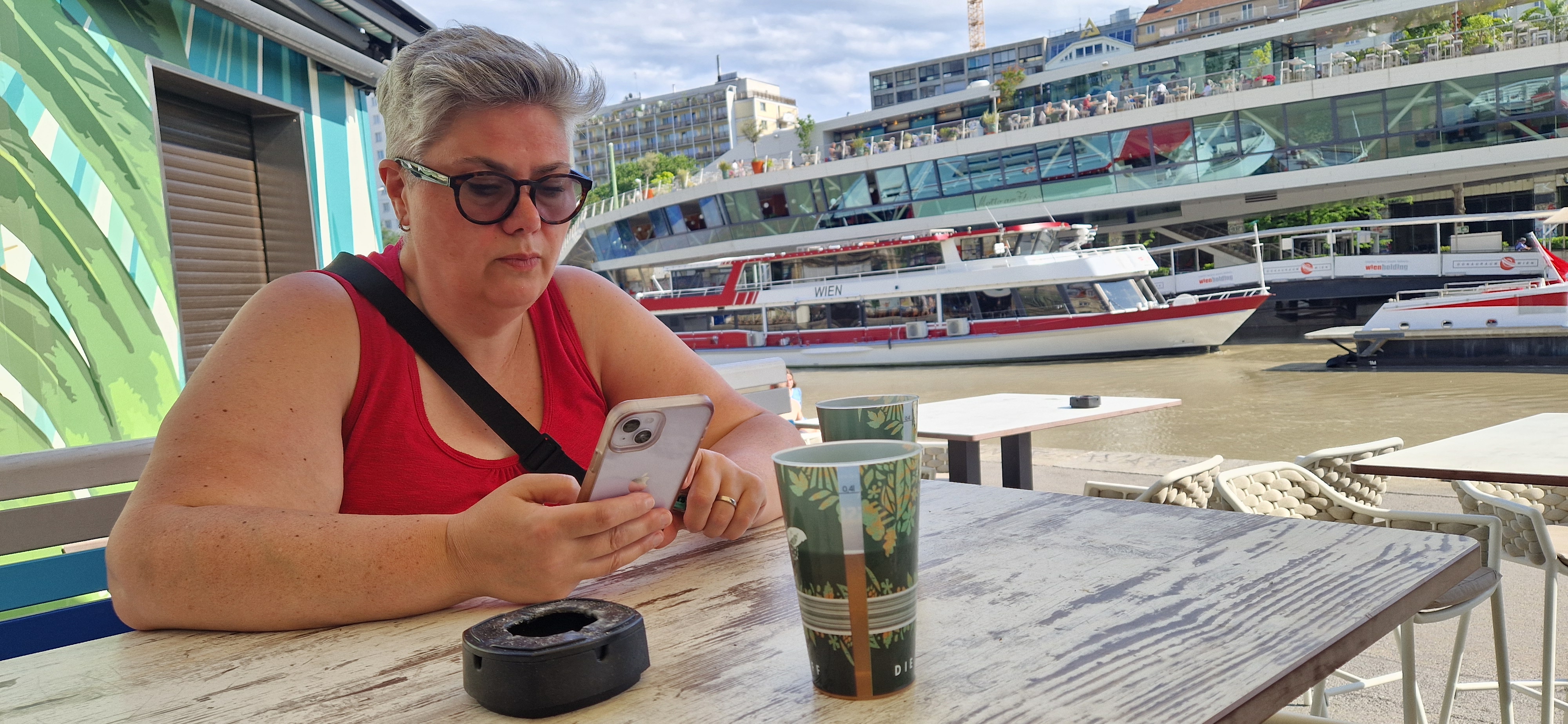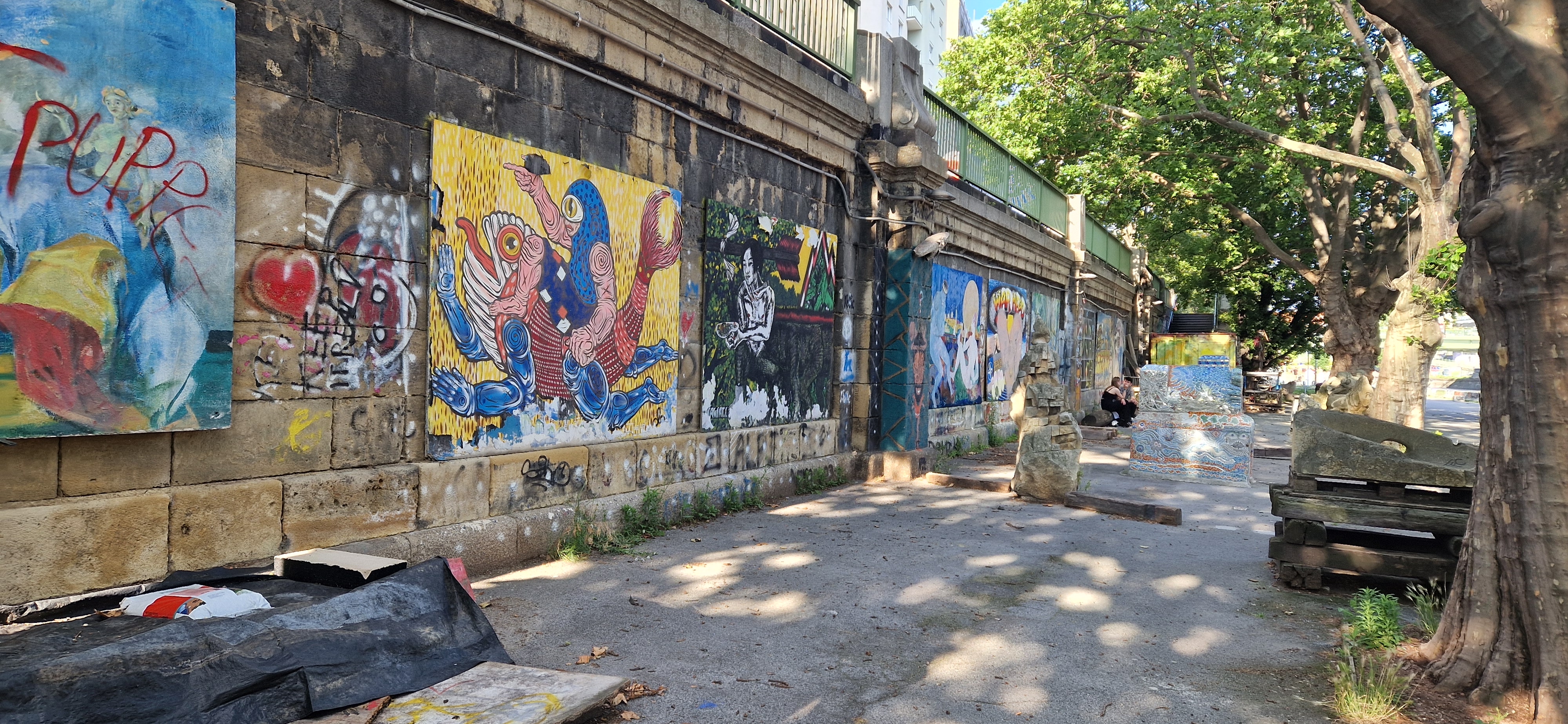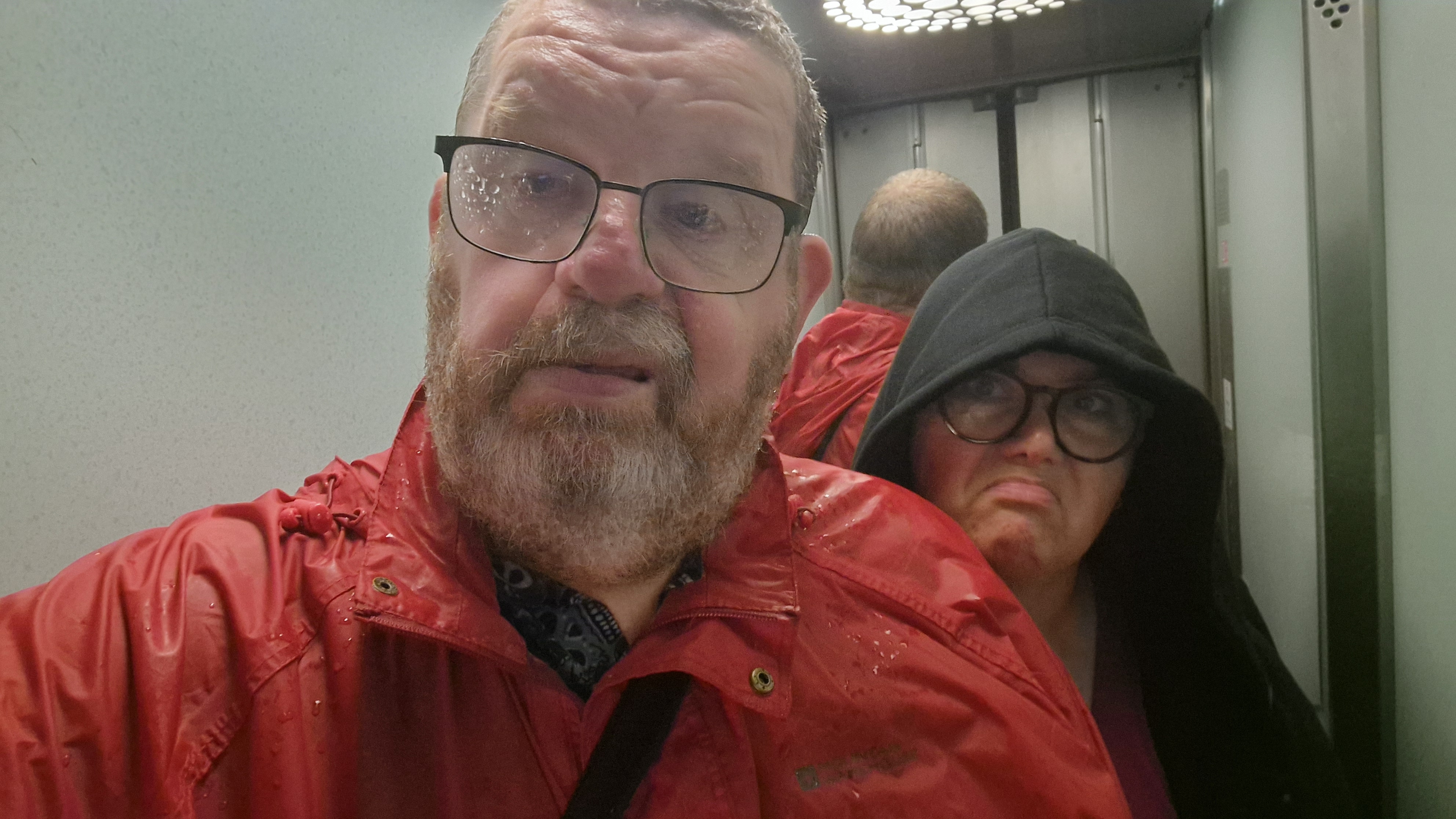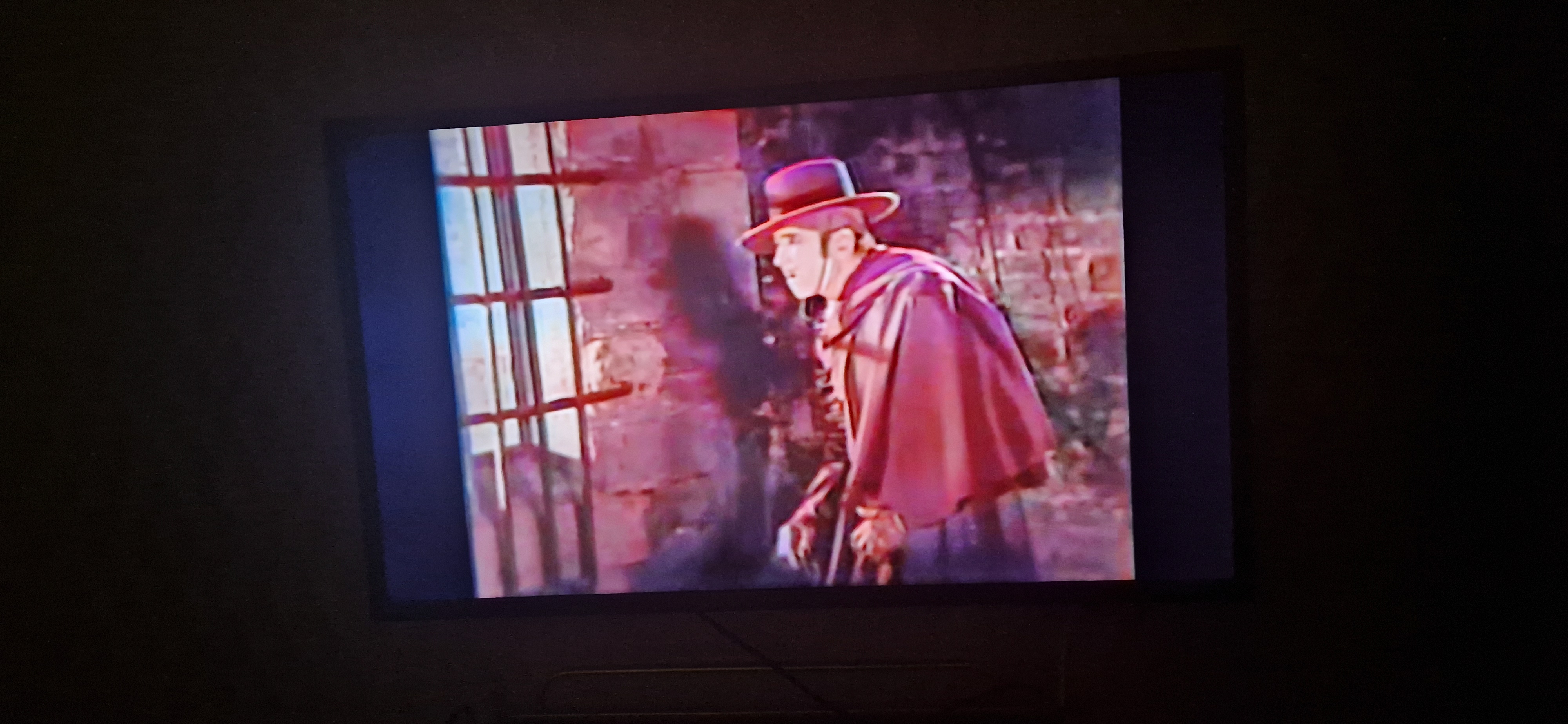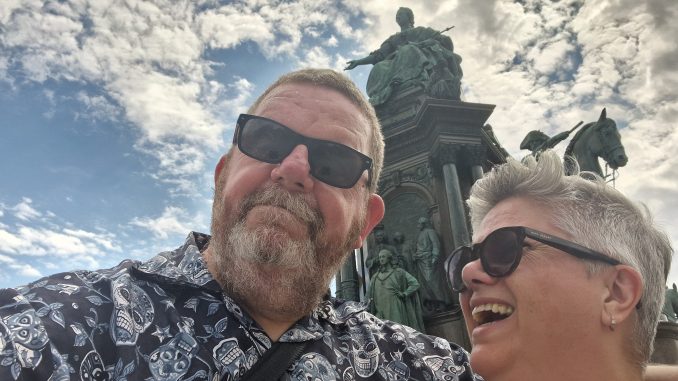
First (and last) full day in Vienna.
We were up at the crack of noon. We watched some more Buster Keaton silent movies – I suppose it avoids the need of trying to understand the plot of an Austrian movie. Then with a minimum of faffing about we waltzed out for a quick whirl around Vienna. (See what I did there?)
First stop was brunch. Well, it was midday and we had ravioli in a rather splendid Italian restaurant, so I suppose you could say we skipped breakfast and went straight to lunch.
Hopping back on the same tram we were on last night, we got off at the ‘Museum Quarter’ which, as I’m sure you have guessed, is where all the museums are. Again, no ticket inspectors wandering around with ropes and chairs.
Vienna, the capital, is the most populous city in Austria. With just over two million inhabitants its larger metropolitan area has a population of nearly 2.9 million, representing nearly one-third of the country’s population. Vienna is the cultural, economic, and political centre of the country, the fifth-largest city by population in the European Union, and the most-populous of the cities on the Danube river.
Famous peeps with Viennese connections include Sigmund Freud, Adolf Hitler and Harry Lime. It was the place to be when classical music was all the rage. Vienna is to classical music, as Seattle is to grunge, Liverpool is to Merseybeat and Manchester is to – erm, Madchester. Hayden, Schubert and Amadeus used to hang around the cafes there, drinking coffee and eating cake. Brahms and Lizst used to get drunk and waltz around the city. The first thing we see as we get off the tram is a garden dedicated to Mozart, with a big statue next to a load of flowers in the shape of a treble clef. Or it might be semi-quaver for all I know. (Actually, it’s a treble clef. I googled it.)
The city is littered with splendifourous Baroque architecture which broadly covers a period from the early 17th century to the mid 18th century. Essentially, Baroque takes your everyday architectural elements and sprinkles fairy dust on them.
There are many grand buildings around the city built with this style in mind, from coffee houses, through opera houses, to full blown palaces. Many of Vienna’s famous landmarks, like the State Opera House, actually went up during the huge period of (re)construction at the end of the 1800s, long after peak period of this style. As a result, they often look older than they actually are, thanks to the historicism approach to architecture popular at the time. A bit like Mods think it’s ok to walk around today as if it is still the 1960s.
Needless to say, some of the beautiful buildings took a bit of a hiding during the Second World War. At the end of the war, the city was divided into control by four states: Russia, USA, France and the UK, similar to the way Berlin was divided. It is against this backdrop that the film ‘The Third Man’ was shot. The plot involved locals and characters from all four states and many scenes in the film feature bomb-damaged buildings. The film ends with a foot chase through the impressive sewer system under the city. Apparently, you can go on a guided tour through the sewer. I think it unlikely we will be doing so.
Money from the US Marshall Plan was vital to the rebuilding of the city and many of the damaged historic buildings were reconstructed.
On May 15, 1955, the country regained its political independence and sovereignty with the ‘Austrian State Treaty’. The Austrian Parliament immediately amended the treaty to establish Austria’s future neutrality and non-alignment (similar to that of Switzerland). This peace treaty was called a state treaty because Austria had temporarily ceased to exist in 1938.
There are numerous guided tours, open top buses, guide books, YouTube videos and the like that help you get around as much of the city as you can in one day.
We didn’t bother with any of that. We were quite happy taking photos of all the architecture in the area – and there’s a lot of it. Instagram will get a hiding when we get home.
It’s hot here. It’s hard to believe people come here skiing: when my ice cream arrived with my Apfel Studel it was melting. We sat in the shade and drank gin and tonic. It’s a hard life.
We decided use our 48 hour pass on the tube. All the underground stations are like mini shopping precincts. And not just vape shops snd newsagents. There are some expensive-looking shops down there. In no time at all we were back near the flat.
All the boozers near the tube station looked busy, but I spotted an interesting joint down a dark alley that looked like a pub. We were like moths being drawn to a flame. Then we realised that ‘salon’ isn’t German* for ‘saloon’, it’s just a hair dressers. Yes, I know, it’s obvious really, but we are nothing if not optimistic.
*Did I mention there’s no Austrian language? They all sprechen sie Deutch around these parts.
We eventually find what looks like a pub, but they don’t sell bier. Just cocktails. We failed to convince them that cider and black is a cocktail and settled for more gin and tonic.
I check my e-mails and discover that our planned cruise down to Bratislava on the Danube has been cancelled. Something about the wrong sort of water in the river.
We finish our gin and walk down to the boaty mc boatface booking office to read the sign on the door, which read ‘ACHTUNG! Nine boatenzie! Fuckenzi Offski!!’ Message received & understood!
But hey. Guess what? There’s a pub on the other side of the canal. We sit in the shade, drink beer watch the world go by and book ourselves a train to Bratislava.
After a few beers in the shade we start wandering up the canal. A friend had recommended the Central Garden. The banks of the canal are one long street art gallery, with sculptures and graffiti lining the entire route. People are shading under trees and under bridges. Chilling and just carefreely enjoy the little things in life.
We find the Central Garden. It’s perfect. Half garden half bar, with a DJ playing to an appreciative audience.
The music is quite intense, hardcore Drone music. Stuff I have previously heard described as ‘difficult music’. Apparently if you listen closely enough you will hear complicated rhythms you don’t notice if you don’t concentrate. People are sat intently watching the DJ and absorbing each note.
After each tune the DJ gives details of the song. Not just who is is by and what it’s called, but the story of the producer and the process of making the song. Rather than a DJ set it’s more like a lecture.
We wander off for a pizza, and come back to soak up the chilled early evening vibe in the bar.
Then clouds gather, the sky flashes with lightning and the air cracks with thunder. We watch the display for about twenty minutes before the heavens open up like a tap has been turned on.
We shelter in the bar for a bit but eventually decide it’s not going to stop so we might as well go for it. The plan had been to bar hop our way back to the flat, but by after a hundred yards or so we were like drowned rats. Soaked right through to our underwear, we decide we might as well just go home.
It’s the most intense rain I can ever recall experiencing. It was monsoon like and at one point we were struggling to walk into the wind.
Needless to say, when we arrived at our street, the clouds broke and there was enough blue in the sky to patch a sailor’s trousers. But the damage was done.
We piled into the building and poured ourselves into the smallest lift in the world, giving no thought to the fact that water and electricity do not mix.
I’m now sat listening to coats dripping in the shower, watching a silent movie on the telly shaking my head in disbelief the Wales only managed a 0-0 draw with Gibraltar: a country with a population of thirty two thousand. That’s right, the entire population couldn’t even fill the Cardiff City Stadium. Let’s hope the lads pull their socks up on Sunday.
Rob Page endured a difficult post-match interview after Wales drew 0-0 with Gibraltar
‘Rob, the last two sides that failed to score against Gibraltar were the Faroe Islands and Grenada. That’s the kind of company we’re in this evening’
